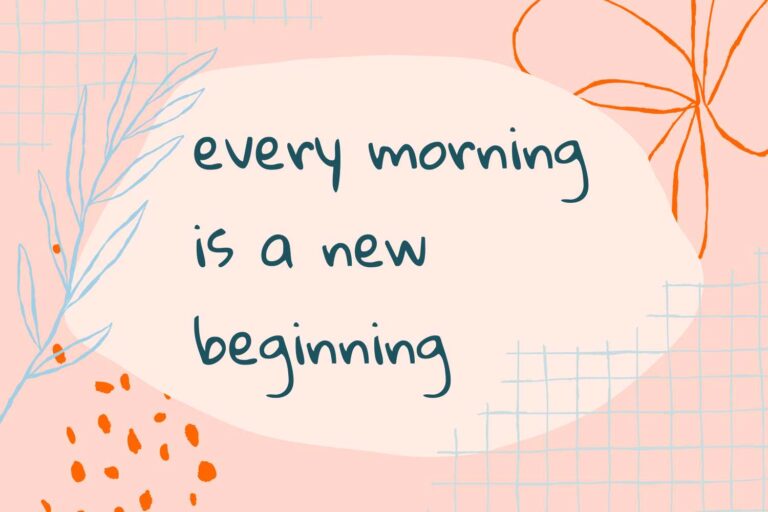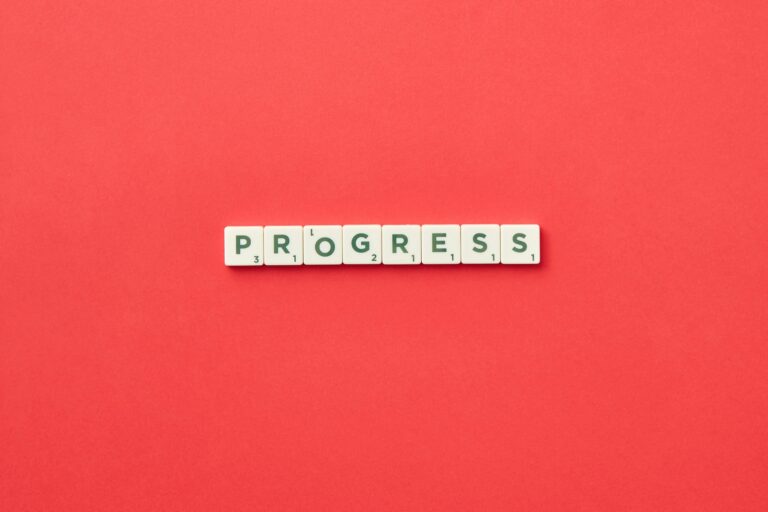Stop chasing someone else’s dream: How to redefine success on your own terms
You’ve been chasing a version of success that was never really yours.
Think about it. When you picture “success” in your mind, where did that image come from? Your parents? Social media? That friend who seems to have it all figured out?
Here’s what nobody wants to admit: Most of us are exhausting ourselves trying to reach a destination we never actually chose.
We’re climbing ladders without checking if they’re leaning against the right wall. We’re running races we never signed up for. And even when we “win,” it feels hollow because deep down, we know this isn’t what we actually wanted.
The success trap nobody talks about
From the time you were little, the world gave you a very clear picture of what success looks like:
Get good grades. Go to college. Get a good job. Make good money. Buy a nice house. Get married. Have kids. Climb the ladder. Buy bigger things. Repeat until you die.
And if you follow this path? Everyone tells you you’re successful. Your parents are proud. Your friends are impressed. Your LinkedIn looks great.
But here’s the problem: This template assumes everyone wants the same things.
It assumes money equals happiness. It assumes status equals fulfillment. It assumes external achievements create internal satisfaction.
All of these assumptions are wrong.
The success template is broken because it completely ignores the most important factor: you. Your personality. Your values. Your idea of what makes life worth living.
When you follow someone else’s template, you’re basically living their life with your face on it. No wonder it feels weird.
Why your brain defaults to external validation
Your brain is wired to keep you safe and accepted by the group. For thousands of years, being rejected by the tribe meant death. So your brain constantly scans for social approval and pushes you toward behaviors that look “successful” to others.
This worked great when we lived in small tribes. But now? You’re trying to impress people who don’t even know you exist, using metrics that have nothing to do with your actual happiness.
The result? You’re running a program designed for survival in a world where you need to thrive.

Take the success reality check
Before you can redefine success on your own terms, you need to see where you’re currently living someone else’s version. This simple exercise reveals the gap between how your life looks and how it feels.
How it works: Rate each life area twice – once for how successful it looks to others, and once for how fulfilled it actually makes you feel. Use a scale of 1-10.
Example: Let’s say your career. You might rate it:
- External success: 8/10 (impressive job title, good salary, others think you’re doing great)
- Internal fulfillment: 4/10 (you’re bored, stressed, and don’t find the work meaningful)
- Gap: 4 points
Now rate your own life areas:
- Career/work: How impressive does your career look to others? How fulfilled does your work actually make you feel? What’s the gap?
- Money/financial status: How successful do your finances appear? How secure and satisfied do you actually feel about money? What’s the gap?
- Relationships: How enviable do your relationships look from the outside? How connected and loved do you actually feel? What’s the gap?
- Lifestyle/possessions: How impressive is your lifestyle to others? How much joy do your possessions and lifestyle actually bring you? What’s the gap?
- Personal growth/learning: How accomplished do you appear in terms of growth and learning? How intellectually stimulated and growing do you actually feel? What’s the gap?
- Health/wellness: How healthy and fit do you appear to others? How energized and well do you actually feel in your body? What’s the gap?
What your gaps mean:
- Large gaps (4+ points): You’re heavily performing someone else’s version of success in this area
- Small gaps (1-3 points): Good alignment between appearance and reality
- Negative gaps (you feel better than it looks): You’ve found authentic success that others might not recognize
The areas with the biggest gaps show you exactly where redefining success will have the most impact on your happiness. Research from Stanford neuroscientist Andrew Huberman confirms that misalignment between our internal values and external actions creates psychological stress and feelings of inauthenticity.
What chasing someone else’s dream actually costs you
Every day you measure yourself by someone else’s standards, you pay a price. And it’s bigger than you think.
You stop trusting yourself. When you’re constantly looking outside for validation, you lose connection with your own instincts. You start second-guessing choices that feel right because they don’t look “successful” to other people.
You sacrifice what actually matters to you. Maybe spending time with your family is more important than working late for a promotion. Maybe creativity fulfills you more than a high salary. But you push these aside because they don’t fit the “success” picture.
You feel like a fraud even when you achieve things. When you reach a milestone that doesn’t align with your values, it feels empty. You wonder why everyone else is so excited about your “success” when you feel nothing.
You’re always chasing the next level. External measures of success never have an endpoint. There’s always a bigger house, higher salary, more impressive title. You’re running toward a finish line that keeps moving.
You develop “success anxiety.” The pressure to maintain an image of success becomes overwhelming. You make decisions based on what looks good rather than what feels right.
Your relationships suffer. When you’re focused on external metrics, you attract people who care about the same things. Your connections become transactional instead of meaningful.
But here’s the biggest cost: You’re spending your one life trying to live up to someone else’s idea of what your life should look like.
Think about that for a second. You get one shot at this. And you’re using it to impress people who probably aren’t even paying that much attention.
Every choice you make based on external expectations instead of internal values compounds over time. Five years of living someone else’s definition of success creates a life that feels completely foreign to who you actually are.
That’s why some people have what looks like “everything” and still feel empty. They’ve successfully achieved someone else’s dream.

The 7 questions that show you what success really means to you
Most people think defining success means making a list of goals. But that’s not it. Your definition of success is deeper – it’s about figuring out what actually matters to you and why.
These questions will help you cut through all the noise:
1. When have you felt most proud of yourself?
I’m not talking about achievements other people celebrated. When have you felt genuinely proud – even if nobody else noticed?
Maybe it was finally having that difficult conversation you’d been avoiding. Maybe it was choosing to rest when everyone expected you to keep pushing. Maybe it was creating something just because you wanted to.
These moments show you your real values in action.
Why this question works: Pride is different from achievement. Achievement can be hollow, but pride comes from alignment between your actions and your values. When you feel genuine pride, you’re getting a glimpse of your authentic definition of success.
2. What are you actually willing to struggle for?
Everyone wants the good parts of success. But what challenges are you willing to face to get there?
If you say you want financial freedom but won’t learn about money, you don’t really want financial freedom – you want the fantasy of it. If you say you want to be creative but won’t risk being bad at something new, you don’t actually want the reality of creative work.
What you’re willing to struggle for shows you what you truly value.
The struggle test: Think about your current goals. Are you willing to do the boring, difficult parts? If not, you might be chasing someone else’s version of success.
3. What does “enough” look like for you?
Society never tells you what “enough” looks like because there’s no money in satisfaction. But you need to know your “enough” or you’ll run forever without ever winning.
Enough money to feel secure. Enough recognition to feel valued. Enough freedom to feel like yourself. Enough challenge to stay interested.
Figure out your “enough” and you have a finish line. Without it, you’ll keep moving the goalposts forever.
How to find your enough: Think about moments when you felt content. Not ecstatic, not achieving something big – just genuinely content. What conditions were present? That’s pointing toward your “enough.”

4. Who makes you jealous and why?
Jealousy is actually your subconscious pointing toward what you want. When you feel that twinge looking at someone else’s life, pay attention.
Are you jealous of their freedom? Their creativity? Their impact? Their relationships? Their peace of mind?
Look past the surface and find the core thing that makes you envious. That’s pointing toward your real definition of success.
The jealousy deep dive: Write down 3 people you’re jealous of. For each person, ask: “What specifically am I envious of?” Keep asking “why” until you get to the core desire.
5. What would you do if money wasn’t an issue?
This isn’t about fantasy. It’s about finding your real motivations. If survival was guaranteed, what would you still choose to do?
Create things? Solve problems? Help people? Build stuff? Connect communities? Learn and teach?
These natural drives should be part of your success definition, not afterthoughts.
Beyond the obvious: Most people say “travel” or “relax.” Push deeper. After a year of traveling, what would you do? That’s where your real motivations live.
6. What did you love as a kid?
Before the world told you what success should look like, what drew you in?
I’m not saying you need to become a firefighter because you loved trucks. But those early interests often reveal your core drives. The kid who loved building things might define success as creating something tangible. The kid who loved performing might define success as moving people emotionally.
Connecting childhood interests to adult success: Look for the underlying drive, not the specific activity. Building blocks → creating something lasting. Putting on shows → moving and inspiring others. Taking care of pets → nurturing and protecting.
7. What would you regret not trying?
When you’re old, what would you wish you had attempted – regardless of how it turned out?
These regrets point toward what matters to you beyond achievement. They show what you value more than comfort, approval, or certainty.
The deathbed test: Imagine you’re 90 years old, looking back on your life. What would make you think “I’m glad I tried that” vs. “I wish I had been brave enough to try”?

The values vs. actions alignment test
Now that you’ve explored what success means to you, let’s see how aligned your current life is with those values.
First, identify what you actually value most. Based on your answers to the 7 questions, what matters most to you? Consider values like:
Freedom, security, creativity, connection, growth, impact, recognition, peace, adventure, knowledge, service, authenticity, health, family, achievement, independence, community…
If you’re not sure what your core values are, this guide to identifying your personal values will walk you through the process step-by-step. Once you know your values, come back here to test your alignment.
Think about your top 5 core values – the things that, when missing from your life, make everything feel off.
Next, honestly assess how well you’re living these values. For each of your top values, ask yourself: “On a scale of 1-10, how well does my current life reflect this value?”
For example:
- If you value freedom but feel micromanaged at work and overscheduled in life, you might rate this a 3/10
- If you value connection but spend most evenings scrolling instead of with people you care about, maybe that’s a 4/10
- If you value creativity but haven’t made anything in months because you’re “too busy,” that might be a 2/10
Look for your biggest misalignments. The values you rated lowest are where you’re most likely living someone else’s definition of success instead of your own. These gaps explain why conventional achievements might feel hollow.
Pick one small shift. For your lowest-rated value, what’s one small thing you could change this week? Not a complete life overhaul – just one small step toward better alignment.
This exercise reveals exactly where the disconnect is between who you are and how you’re living. And more importantly, it shows you where to focus first.
How to stop caring what other people think
Once you figure out what success means to you, you’ll face a new problem: sticking to it when other people don’t get it.
Here’s what to expect and how to handle it:
People will question your choices. When you stop following the standard path, others notice. Some will be curious. Others will be critical. Most are just projecting their own fears onto your decisions.
Remember why you’re doing this. Every time someone questions your version of success, reconnect with your reasons. You’re not being different just to be different – you’re being authentic.
Find people who get it. You need at least a few people in your corner who understand that success looks different for everyone. Their support helps when the world pushes back.
Trust the weird feeling. Living authentically feels uncomfortable at first because you’ve been practicing conformity for years. That discomfort doesn’t mean you’re wrong – it means you’re growing.
How to handle specific pushback:
When family says you’re “wasting your potential”: “I understand this looks different from what you expected. I’m not wasting my potential – I’m using it in a way that aligns with who I actually am.”
When friends act like you’ve changed: “I haven’t changed who I am. I’m just being more honest about what actually matters to me.”
When colleagues think you’re not ambitious enough: “I’m very ambitious – just about different things than what you might expect.”
When society makes you feel selfish: “Taking care of my own wellbeing and living authentically isn’t selfish. It’s necessary for me to show up fully for others.”

Creating your own success rules
Time to get practical. Here’s how to create your personal success framework:
Step 1: Write your success statement
Fill in this blank: “I feel most successful when…”
Be specific. Not “when I’m happy” but “when I’m solving problems that actually help people” or “when I have complete control over my schedule.”
Examples of strong success statements:
- “I feel most successful when I’m creating something meaningful while having time for deep relationships.”
- “I feel most successful when I’m continuously learning and sharing knowledge with others.”
- “I feel most successful when I’m making decisions from a place of calm confidence rather than fear or pressure.”
Once you know what success means to you, this proven goal-setting framework will help you create and achieve goals that actually align with your authentic definition instead of society’s expectations.
Step 2: Pick your personal scoreboard
Choose 3-5 ways you’ll actually measure success. These become your real metrics instead of society’s.
Examples:
- How many days per week I feel energized by my work
- Quality of my relationships with people I care about
- Time I spend doing things I’m naturally good at
- How aligned my spending is with my values
- How peaceful I feel when I go to bed
- Number of times per month I choose my values over others’ expectations
- How often I feel proud of my choices vs. ashamed of them
Make your metrics specific: Instead of “good relationships,” try “have meaningful one-on-one time with someone I care about at least 3 times per week.”
Instead of “feel fulfilled at work,” try “spend at least 60% of my work time on tasks that use my natural strengths.”
Step 3: Know your boundaries
What will you no longer sacrifice for other people’s definition of success?
Your mental health for a prestigious job? Family time for extra money? Your values for social approval? Your authentic self for other people’s comfort?
Write these down. When opportunities come up, check them against your boundaries.
Boundary examples:
- I will not take a job that requires me to work more than 50 hours per week.
- I will not spend money to impress others if it creates financial stress.
- I will not say yes to commitments that don’t align with my values just to avoid disappointing people.
- I will not stay in relationships where I have to pretend to be someone I’m not.

Step 4: Create your decision filter
When you’re facing choices, ask: “Does this move me toward or away from my definition of success?”
This one question cuts through all the complexity and helps you make decisions based on what actually matters to you.
Advanced decision filters:
- Will this choice make me proud of myself in 5 years?
- Am I choosing this because it aligns with my values or because it looks good to others?
- Does this opportunity energize me or drain me when I really think about it?
- What would the person I’m becoming choose in this situation?
Your success redefinition action plan
Changing how you define success isn’t a one-day decision. It’s a gradual process that requires intentional steps. Here’s your roadmap:
Step 1: Become aware of external validation patterns (this week)
Start catching yourself in the act of measuring by external standards.
Your daily practice: Set 3 phone reminders. When they go off, ask: “Am I thinking about what looks successful or what feels successful right now?”
Weekend action: Complete the exercises in this article – the success reality check, the 7 questions, and write your personal success statement.
Goal: Simply notice how often you default to external measures without trying to change anything yet.
Step 2: Experiment with internal metrics (next 1-2 weeks)
Now start testing your own measures of success.
Your daily practice: Each evening, rate your day based on your chosen metrics (not conventional ones). For example: “How aligned with my values was I today?” or “How much energy did my choices give me?”
One bold move: Make one decision this week based purely on your values, not what others expect. This could be saying no to something that doesn’t align, or saying yes to something that might seem weird to others.
Goal: Start trusting your internal compass over external validation.
Step 3: Prepare for pushback (ongoing)
When you stop following conventional success markers, people will notice and comment.
Your preparation: Practice explaining your definition of success in simple terms. Role-play responses to potential criticism.
Build your support system: Find at least one person who supports your authentic definition of success – a friend, family member, mentor, or online community.
Goal: Build confidence in your choices even when others don’t understand them.
Step 4: Make it your default (next 2-4 weeks)
Integration phase – making this your new normal.
Your daily practice: Before making any significant decision, ask: “Does this move me toward or away from my definition of success?”
Monthly review: Look at your major life areas and identify what still needs to shift to align with your authentic definition of success.
Goal: Feel confident that you’re living by your own definition of success, not someone else’s. confident that you’re living by your own definition of success, not someone else’s

Common obstacles when redefining success
Every person who redefines success on their own terms faces predictable challenges. Here’s how to handle the most common ones:
Obstacle 1: “But I’ll disappoint people.”
The fear: If I stop living up to others’ expectations, I’ll let them down.
The reality: You can’t build a fulfilling life on the foundation of others’ expectations. And most people care way less about your choices than you think.
How to handle it: Start with small changes. Show through your actions that living authentically makes you a better friend, family member, and person overall.
Obstacle 2: “I don’t know what I actually want.”
The fear: What if I redefine success and realize I still don’t know what makes me happy?
The reality: Clarity comes through action, not thinking. You discover what you want by trying things and seeing how they feel.
How to handle it: Start with what you know you DON’T want. Eliminating what doesn’t fit is often easier than identifying what does.
Obstacle 3: “What if I’m wrong and regret this later?”
The fear: What if I give up conventional success and realize I actually did want those things?
The reality: You can always adjust course. But you can’t get back time spent living inauthentically.
How to handle it: Make changes gradually. You’re not blowing up your life – you’re fine-tuning it to fit who you actually are.
Redefining success requires embracing uncertainty and viewing changes as experiments rather than permanent decisions. This growth mindset guide will help you approach this journey with confidence and resilience.
Obstacle 4: “This feels selfish.”
The fear: Focusing on what I want instead of what others expect seems self-centered.
The reality: Living authentically allows you to contribute your best to the world. When you’re aligned with your values, you have more energy and enthusiasm to help others.
How to handle it: Notice how much more you have to give when you’re living in alignment with your values.
Learning to prioritize your authentic definition of success isn’t selfish – it’s necessary. This self-compassion toolkit will help you navigate the guilt and treat yourself with kindness during this transition.
Obstacle 5: “I’m too far down this path to change.”
The fear: I’ve already built a life around conventional success. It’s too late to change.
The reality: It’s never too late to start living more authentically. You don’t have to change everything at once.
How to handle it: Look for small ways to inject your authentic values into your current situation. Often you can shift the meaning of what you’re doing without changing everything.
Obstacle 6: “What about financial security?”
The fear: Following my authentic definition of success will leave me broke.
The reality: Authentic success doesn’t mean ignoring practical needs. It means finding ways to meet those needs that align with your values.
How to handle it: Get clear on how much financial security you actually need (not what society says you should want). Often it’s less than you think.

What your new definition of success actually looks like
When you successfully redefine success on your own terms, life looks and feels different in specific ways:
Decision-making becomes easier. Instead of agonizing over what others will think, you have clear criteria for choices. Does this align with my values? Does this move me toward my definition of success? Simple.
You stop comparing yourself to others constantly. When you’re playing your own game by your own rules, other people’s achievements become interesting but not threatening.
Achievements feel more meaningful. When you reach milestones that align with your values, the satisfaction lasts. You feel proud instead of empty.
You have more energy. Living authentically is energizing. Fighting against your nature is exhausting.
Relationships improve. When you’re not trying to impress people or meet their expectations, you can connect more genuinely. You attract people who appreciate who you actually are.
You feel calmer. The constant anxiety of trying to live up to external standards fades. You might still have challenges, but you’re not adding the extra layer of “am I successful enough?”
You trust yourself more. Each time you choose your values over others’ expectations and it works out, you build confidence in your own judgment.
Life feels more like yours. Instead of feeling like you’re playing a role or following a script, you feel like you’re actually living your life.
Your success transformation starts today
You have two choices: Keep exhausting yourself trying to reach someone else’s finish line, or start creating a life that feels successful from the inside out.
The process isn’t always comfortable. You’ll question yourself. Others might not understand. You might feel guilty for wanting something different than what you “should” want.
But here’s what I know: Every person who redefines success on their own terms says the same thing – they wish they had done it sooner.
The world has plenty of people living conventional definitions of success. What it needs is more people brave enough to live authentically and show others it’s possible.
You’ve spent enough time running someone else’s race. Time to draw your own finish line.
Ready to define success on your terms?
If you’re ready to stop measuring yourself by standards that don’t matter and start building your own definition of success, the Mindset and motivation bundle gives you everything you need.
This comprehensive system includes:
- Purpose and goal-setting workbook: Figure out what truly matters to you and create goals that align with your real definition of success, not society’s expectations.
- Mental reset workbook: Break the thought patterns that keep you chasing external validation and build unshakeable inner confidence.
- Find your direction workbook: Workbook to help you discover what actually excites you, test your interests in real life, and build clarity through action instead of endless overthinking.
- Identity shift workbook: Transform how you see yourself and step confidently into your authentic version of success.
These workbooks work together to help you redefine success on your terms and build a life that feels genuinely fulfilling. Each workbook includes 30 days of guided exercises, practical tools, and frameworks that create lasting change.
The world will always have opinions about what your success should look like. But only you get to decide what it actually means.
Stop chasing someone else’s dream. Start creating your own.







